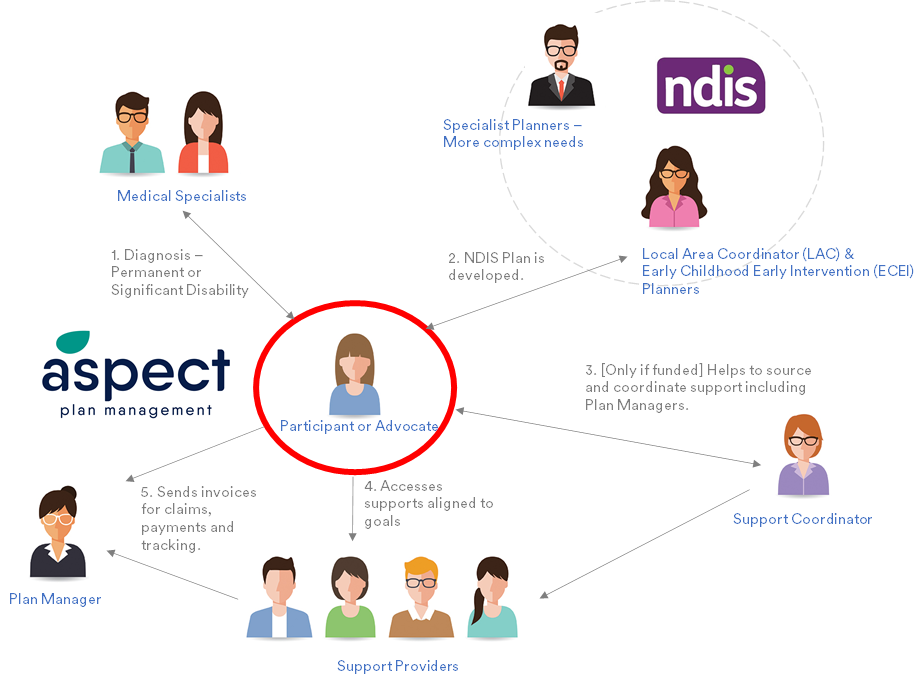Creating Your Plan
Once your eligibility has been determined, it is time to make your plan. To do this, you will attend a meeting with a Planner or Local Area Coordinator, so they can discuss your needs and goals and workout what support you need.
It is important to prepare for your planning meeting beforehand, and gather all your information together so that the planner can make the best plan for you, that will meet your needs.
Refer to Step 2 in the Picture.

It’s important to think about goals/activities and tasks that are important to you, and what support you need that relates to your disability. It could be a goal to use public transport independently; a goal to help build your life skills so you can become more independent, or a goal to help find, keep or change jobs.
It might take a little time for your plan to be completed and approved, the planner will let you know what to expect, and will contact you once it is approved.
When you receive your plan it will tell you what funding has been approved, and provide details of your ‘support budgets’.
Types of support budgets
Each person living with a disability has unique needs. Participants in the NDIS are assessed individually for the support they require, and the NDIS will fund their needs in three different categories, called support budgets.
The three categories are:
Core Supports
These are the supports needed for daily living. Your Core budget is the most flexible, and includes four categories of support:
- Consumables (e.g. purchasing everyday use items such as continence aids)
- Daily Activities (e.g. assistance with self-care activities during the day or evening)
- Assistance with Social and Community Participation (e.g. supports to enable you to engage in social or recreational activities)
- Transport (e.g. if you are unable to use public transport because of your disability).
Generally the money in your core budget is flexible, and you can use your funding for any of the 4 support types depending on your needs and preferences. The exception is if some of the funding is ‘stated’, which means that it can only be used for the specific purpose and items mentioned in your plan.
Capacity Building
Your capacity building budget is used for a range of services or therapies to help you build your independence, participation in community and skills. It is somewhat less flexible than your core support budget, with funding broken down into 8 categories, and the funds must be used within the category they are assigned to in your plan. The 8 categories in the capacity building budget are:
- Choice and Control e.g. training in planning and plan management
- Daily Activity e.g. therapy aimed at building your capacity to participate
- Employment e.g. employment related assessment and counselling
- Health and Well being e.g. exercise advice required due to impact of disability
- Home Living e.g. support to obtain/retain appropriate accommodation
- Lifelong Learning e.g. assistance moving from school to further education
- Relationships e.g. positive behavioral support strategies to reduce behaviors of concern
- Social and Community Participation e.g. Individual life skills development and training including public transport training and support, developing skills for community, social and recreational participation.
Capital Budget
The capital budget is used for home and vehicle modifications specific to your disability needs, for example ramps or rails, hoists, lifts etc. Items in the capital budget must be quoted, and funds can only be used for their specific purpose.
Part 2 of 3



